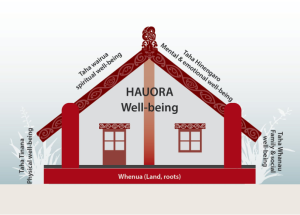In our fast-paced world, where the wellness industry is projected to reach a worth of 7 trillion dollars by 2025, the concept of “wellbeing” has garnered significant attention. However, amidst its growing complexity and confusion, it can be challenging to grasp what it actually means…
If you’ve had the opportunity to work with us in the past, you might recall that at the beginning of each program, we establish one of three goals – returning to work, work readiness, or wellbeing. So we thought it would be good to uncover what we mean when we say “wellbeing” and also, how you can form a definition of your own.
The Foundations of Wellbeing
Wellbeing, as defined by the World Health Organisation (WHO) is “a state of complete physical, mental, and social wellbeing and not merely the absence of disease or infirmity.”
Australia and New Zealand both have established wellbeing models that like WHO, emphasise different domains and the interconnectedness of these domains.

The Australian model highlights physical, mental and social elements and the New Zealand model (pictured) goes on to add spiritual wellbeing and the cultural component of Whenua. No matter which model, or definition, you look at, there are some common threads.
A Holistic Perspective
Wellbeing encompasses multiple dimensions and goes beyond physical health or the absence of disease. It also relies on positive states, positive relationships, and a sense of purpose or spirituality.
Interconnectedness
Not only are each of the dimensions important in isolation, they are interrelated and influence one another, so we must consider them in union. It is for this reason the NZ model is displayed as a meeting house, portraying that in order for wellbeing to be “held up”, each aspect of the foundation must be present.
An Individualised Approach
These widely used models and definitions lay a solid foundation for understanding wellbeing. However, it’s important to remember that each individual has their own unique set of needs, preferences, and priorities across the different dimensions of wellbeing. That’s why taking an individualised approach is absolutely crucial. Ask yourself, “what do I need personally, to feel well?”
Let’s take an example to illustrate this point. Jack and Emily both want to enhance their wellbeing. Jack finds meditation to be his go-to practise for finding purpose and meaning in life. On the other hand, Emily is motivated by setting clear goals and relentlessly pursuing them. In another scenario, Jane thrives on deep, meaningful connections with a close-knit group of friends, while Mark feels a sense of belonging and fulfilment by being part of a larger community or social group. Everyone has their own preferred paths to wellbeing, and that’s what makes our work so exciting – people are wonderfully diverse!
In Summary…
Reflecting on what we’ve uncovered about “wellbeing” and its dimensions, it is our hope that you now have a clearer understanding when we reference this concept.
Additionally, armed with this newfound knowledge, you have a valuable arsenal to tap into as you strive to enhance your own wellbeing. So before you go, take a moment to contemplate:
What does wellbeing mean to you?
Author: Tessa Nielsen
Clinical Exercise Physiologist and
Content Creator at Specialised Health
References:
https://globalwellnessinstitute.org/press-room/statistics-and-facts/
#exercisephysiology #exerciserehab #rehabilitation #lifeinsurance #incomeprotection #ctp #workcover #mobile #mobileexercisephysiology #fatigue #mentalhealth #cancer #musculoskeletal #injury #pain #physio #physiotherapy #Sydney #Brisbane #Melbourne #Adelaide #Auckland #Waikato #BayofPlenty #Wellington #Otago #Christchurch



